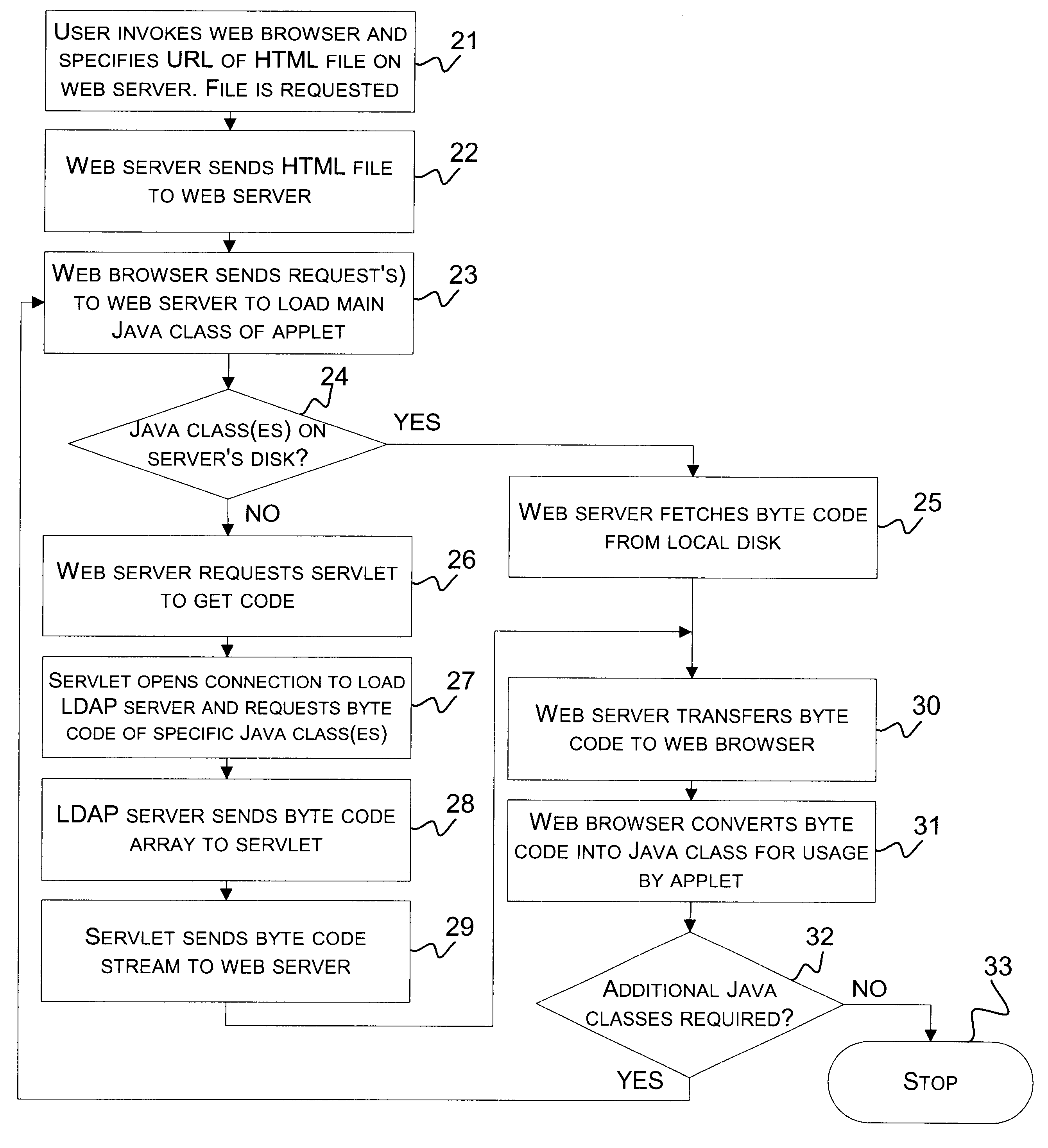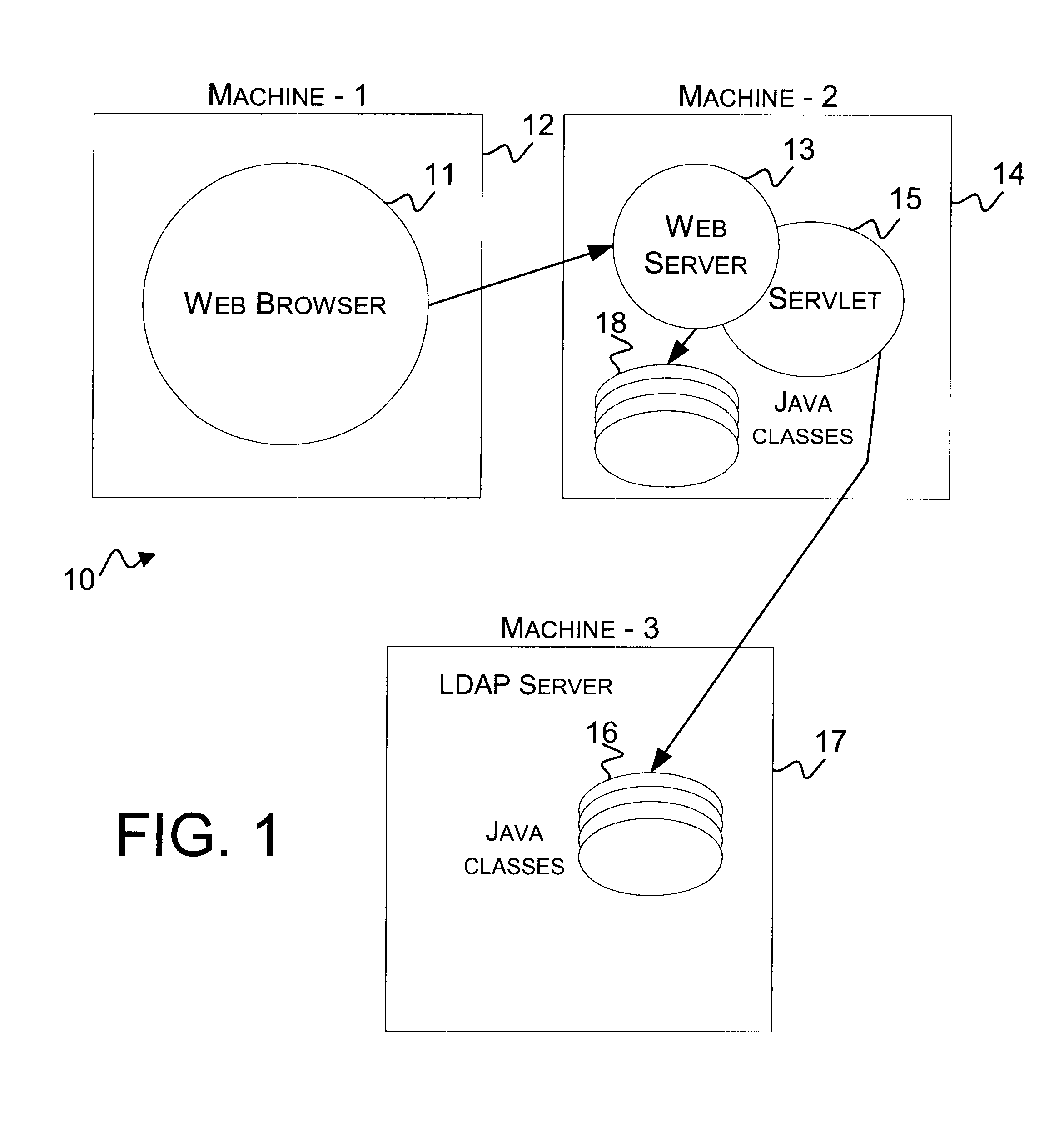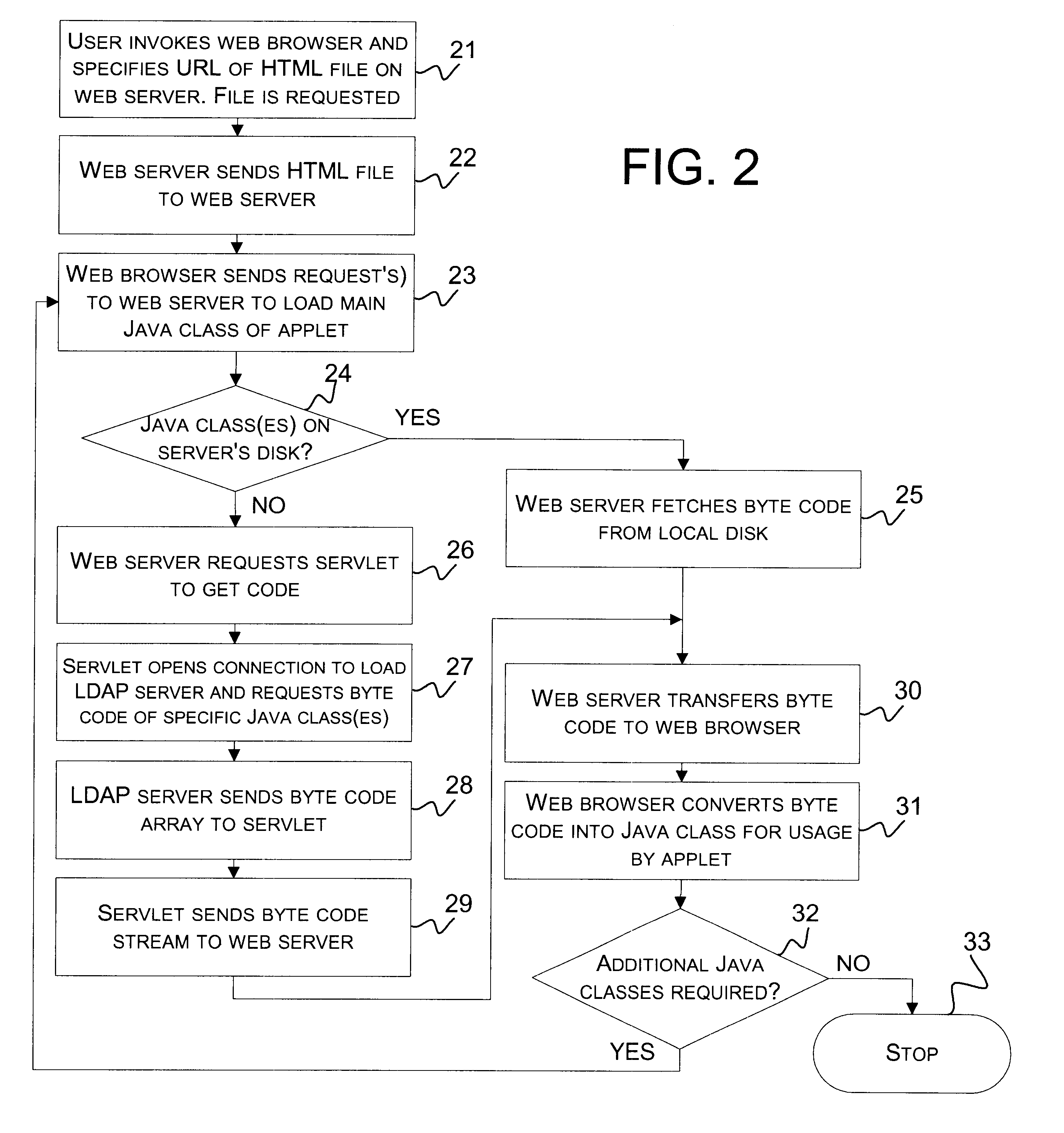Self-configurable distributed system
a distributed system and self-configurable technology, applied in computing, instruments, electric digital data processing, etc., can solve the problems of applets only opening a connection, applets only loading configuration classes, and constraints serious limitations
- Summary
- Abstract
- Description
- Claims
- Application Information
AI Technical Summary
Benefits of technology
Problems solved by technology
Method used
Image
Examples
Embodiment Construction
The present invention is used in the context of self-configurable distributed systems where components are implemented in Java. Some Java classes, for example, display handlers, are utilized to present information in a Web browser. The display handlers are not necessarily located in the machine where the Web browser is running. They can be remotely located on another machine or multiple machines since they are running a distributed application. Therefore, the byte code is not located on a single machine.
FIG. 1 is a simplified block diagram of a network architecture 10 configured in accordance with the teachings of the present invention. In FIG. 1, a Web browser 11 is running on Machine-1 (12) while a Web server 13 is running on Machine-2 (14). The present invention modifies the way the Web server works using a special Java servlet 15 enabling Java class byte code 16 to be downloaded from an alternate host such as Machine-3 which may be, for example, a Lightweight Directory Access Pr...
PUM
 Login to View More
Login to View More Abstract
Description
Claims
Application Information
 Login to View More
Login to View More - R&D
- Intellectual Property
- Life Sciences
- Materials
- Tech Scout
- Unparalleled Data Quality
- Higher Quality Content
- 60% Fewer Hallucinations
Browse by: Latest US Patents, China's latest patents, Technical Efficacy Thesaurus, Application Domain, Technology Topic, Popular Technical Reports.
© 2025 PatSnap. All rights reserved.Legal|Privacy policy|Modern Slavery Act Transparency Statement|Sitemap|About US| Contact US: help@patsnap.com



